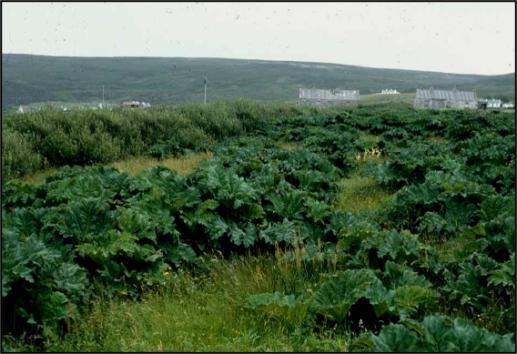Professor Bruce Osborne co-authors EPA Research Report on ‘Managing Invasive Plant Species’
Earth Institute member Professor Bruce Osborne co-authored the recently published EPA Research Report ‘Managing Invasive Plant Species’. This is based on the EPA-funded project of the same name that he led.
Professor Bruce Osborne explains the urgent need to deal with the challenge of plant invaders,
Plant invaders have been shown to have major impacts on biodiversity and ecosystem services with significant economic consequences both from the effects they have, and the costs associated with their removal. There is therefore an urgency to develop protocols that can effectively deal with the effects of plant invaders that are likely to be exacerbated by the effects of climate change. Current measures for controlling invasive plants have largely been applied piecemeal with little consideration of the environmental effects that they might have or their efficacy. Given the continuing increase in invasive plant populations globally past efforts have been largely unsuccessful, and there has been little consideration of their contrasting impacts so that the measures applied would need to account for invader and site or region-specific effects.
Professor Osborne highlights the key findings,
The results from this project argue for a more nuanced and tailored approach to dealing with plant invaders that recognises how different they can be and the varied impacts that they have, ranging from negative, neutral (no effect), to even positive (beneficial) effects. Although there were largely consistent negative impacts on the standing vegetation the effects on the soil seed bank can show considerable variation. This is particularly important as the soil seedbank provides a reservoir of seeds that will largely determine the successful post invasion recovery of the vegetation. For the two invaders that were the major focus of this investigation, Impatiens parviflora and Gunnera tinctoria the effects on soil biogeochemistry were small, although this may differ among invasive plant species.
Whilst so called positive/beneficial effects may seem rather surprising there is increasing evidence to support this, and the big question is how do we take this into consideration? The work also dispels some of the myths associated with successful plant invasions, including the often-quoted requirement for a superior competitive ability, as well as challenging our ability to identify new potentially problematic plant species before they can become established. Overall, there is a lack of knowledge of the biology of invasive plant species and how they impact at different trophic levels, which has limited our ability to make informed management decisions at the ecosystem scale.

Gunnera tinctoria invasion of coastal grassland on Achill Island, Co Mayo
Commenting on the importance of the Earth Institute as a platform for interdisciplinary research Professor Osborne said,
Both the understanding and management of plant invasions requires cross-disciplinary expertise not only in the biological and ecological sciences but also in areas such as economics/socioeconomics. It is increasingly recognised, for instance, that the public perception of introduced plant species and their effects on the environment have a large part to play in any management decisions. The Earth Institute by fostering interdisciplinary research provides a platform for future comprehensive scientific studies on invasive plant species and their societal and economic implications.
You can read the full report here and can explore more publications related to plant invasions from Professor Osborne here.


